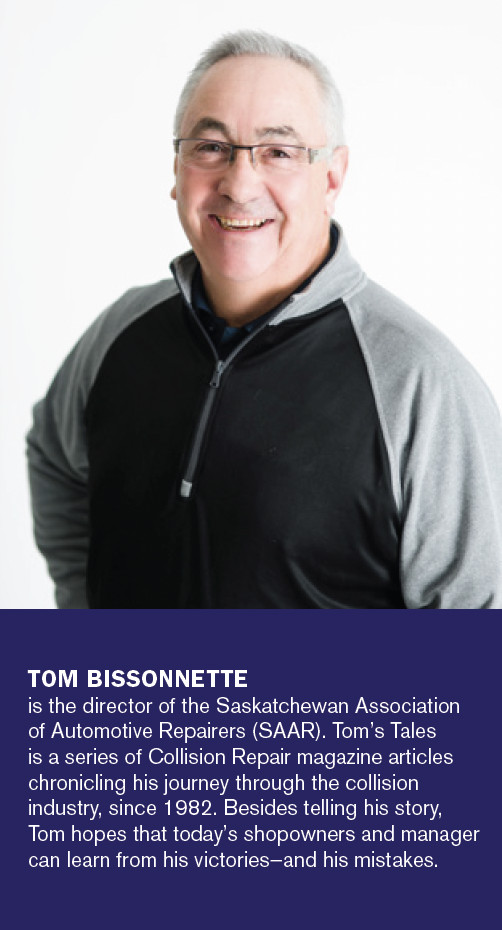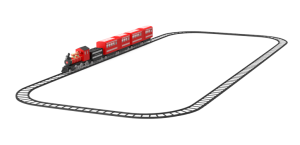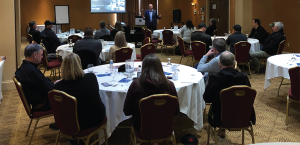It’s time for serious change—are you in?
Column by TOM BISSONNETTE
In the past six years I have seen more change to the collision industry than I ever did in my first 30 years. I am not sure that I would be enjoying the business as much now as I did a short time ago.
The amount of administration and technical issues that have been downloaded to collision centres for the labour rates they’re paid is getting to be totally ridiculous. What I could do with 15 people six years ago now takes 20 people and with parts becoming a much bigger part of every work order, the gross profit is simply not there to sustain most bodyshops.
Admittedly shops with large sales volumes are somewhat protected from the increased costs but the smaller, mainly rural, shops are really feeling the pinch. As our businesses try to compete with other four-year trades, or industries like mining and oil, to attract and retain employees, we find we simply cannot compete.
To make matters worse, in our province the government insurance company, SGI, continues to hire some of our best and brightest young technicians as appraisers. To be fair, SGI is aware of this issue, and they are taking steps to no longer take our young journeyman technicians.
It used to be that a collision centre could afford to pay its employees more than the insurance companies could, but not anymore. The days of the flat rate technician pounding out 300 hours a month is fast becoming a thing of the past in our province. We are required to follow OEM procedures and document them with photos—if we do not, we don’t get paid for some labour operations and we most certainly will have the job audited by our insurance company. If we make a mistake our insurer can and does call the customer back in, explain where we went wrong and completely re-do the work that was not done according to OEM guidelines.
 Every job requires that the technician supplies a digital copy of the OEM procedures to the insurance file and numerous photos at every step of the repair to confirm that these procedures have been followed to the letter—unless our insurance partner feels the OEM procedure is not totally necessary and standard industry operating procedures will suffice—it usually means they want it repaired cheaper.
Every job requires that the technician supplies a digital copy of the OEM procedures to the insurance file and numerous photos at every step of the repair to confirm that these procedures have been followed to the letter—unless our insurance partner feels the OEM procedure is not totally necessary and standard industry operating procedures will suffice—it usually means they want it repaired cheaper.
Aftermarket parts continue to be a challenge for our facilities. The extra gross margins hardly pay for the extra time pre-fitting parts or spending extra time to make these parts fit. Sure, some of these parts are fine but we really don’t know for sure until we try them on the vehicle.
In our province we have spent the last five years working on the Safe and Quality Auto Repair Program (SQARP). Our insurance partner requires all certified shops to be either I-CAR Gold Class or have OEM Certifications. All facilities are also required to have the proper equipment to properly fix today’s vehicles and the training to use them properly. I would not be exaggerating to suggest that the average business had to spend the better part of $250,000 to meet the SQARP Certification. In Saskatchewan we have not had a labour rate increase since 2016, when we were at just over $92 per hour. Every year since then our insurance partner has refused to give a rate increase with the justification that we have the highest labour rate in the country. The challenge for our shops is that we got that labour rate so that we could compete with other four-year trades for employees and most shops gave their staff significant wage increases. Since then, our profitability has been eroded with the increased costs previously mentioned and with the latest up tick of inflation it has simply gotten worse.
Over the last few years SGI has made a truly admirable effort to connect with the collision industry, discover our pain points and then work with our shops to eliminate as many as possible. We are not where we want to be but thank goodness we are not where we used to be. I for one really appreciate SGI’s willingness to engage in conversations with our collision centres—they have set a standard that other insurance companies seriously need to consider. My experience is that we have both benefited from these conversations.
So, what is a fair labour rate? Generally, the rule of thumb is that a shop needs to make at least 40 percent gross profit after all direct costs—and that could be in question as we now see parts sales outstripping labour sales in our market. Just the same, let’s do the math.
Currently we are paying our journeyman technicians anywhere from $30 to $35 an hour, add 30 percent for benefits—holidays, training, uniforms, group insurance, CPP, UIC etc.—and we are paying anywhere from $39 per hour to $45.50 for a 40-hour work week. Overtime, which is plentiful due to a lack of qualified help, adds another 50 percent to that cost. Using a 60 percent gross margin, assuming your technician is at least 100 percent efficient—let’s face it, some are higher, some are lower, we need to look at the average technician—a shop would need a labour rate of at least $100 per hour to $120. If you consider the overtime that most shops have to pay I believe that $120 an hour is the minimum and $150 per hour is more realistic.


Could we initiate a national association that would advocate for the consumer and the bodyshops?
Does the consumer know we are installing non-factory-approved parts on their cars? Do they understand the concept of diminished value when their vehicle is in a significant collision? Do they realize that their insurer is not allowing some OEM repair procedures to be performed on their vehicles? Do they understand that in some cases going to an insurance preferred shop may not be beneficial for them?
How about advocating for the bodyshops? Just because some insurance companies pay insufficient labour rates do they all have to follow suit? Is it fair to insist that bodyshops discussing door rates is an act of antitrust, yet most insurance companies are within spitting distance of each other’s door rates? Could a national association speak on behalf of bodyshops to our elected officials and the Insurance Bureau of Canada?
What should this national association look like? I can’t say for sure, but it starts with having a conversation and I know that Collision Repair magazine is asking the industry to bring their ideas forward. If enough owners come forward, I believe we could form a national association to educate consumers, governments and insurance companies of the dire situation our industry finds itself in.
















































































4 Responses
Great article Tom, we should never be in this position as shop owners, A national association would be awesome, but for some it may be to late. with the labor rate here in Alberta as low as $70.00 & some shops that will work for that? it makes it really hard to move forward, also the material rates need to be looked at as well.
I have been working on something I’m tentatively calling from a tech’s point of view. Articles on issues in the industry always seem to be from an owner’s or educator’s view point, or that of equipment/software/coaching salesmen. While key issues are getting pointed out I feel some are being overlooked that could lead to a resolution. The key to a lot of these issues, in my opinion, could be found in encouraging techs to take a more active roll in promoting the trade and fairness within it. A lot of more senior techs and even a few of younger ones are simply discouraged from speaking up or staying current, which leads to choosing instead to “do the job and go home”.
So many great points. It all starts with the way we do business, until that changes, nothing changes.
Great read Tom. You may know in BC our rate moved a total of 4.4% over 12 years. Crazy. All the shops are all on the brink. Repairs shops soon to become condos. Just a note about the cost of detailing. If you include this in our cost of labour cost increases it by an additional 10%. Ouch.